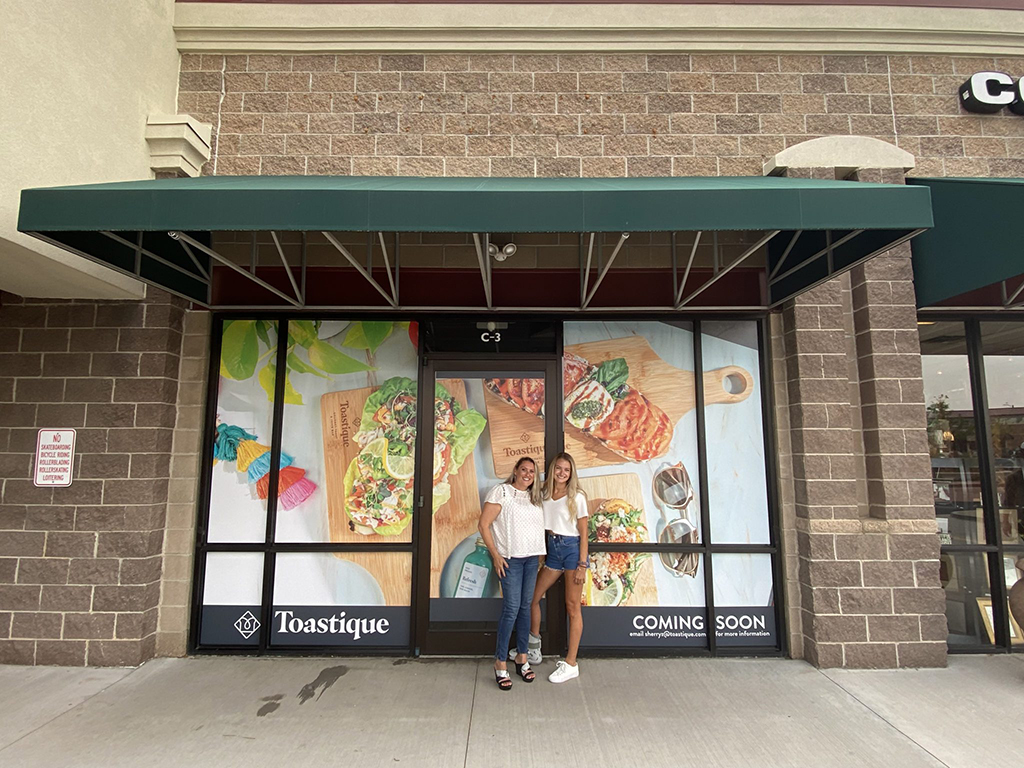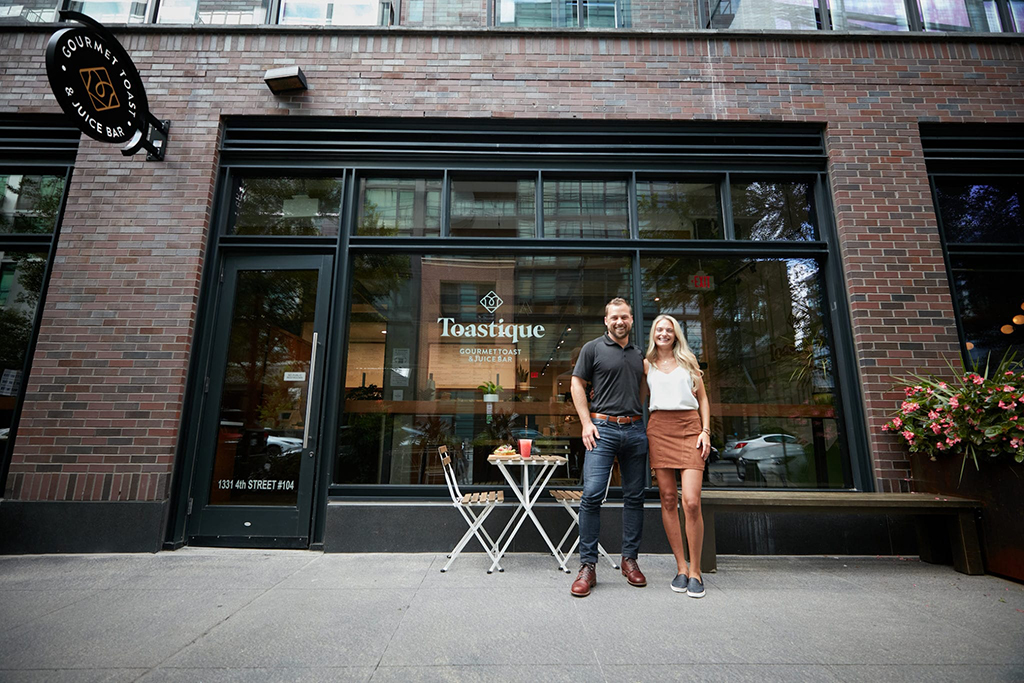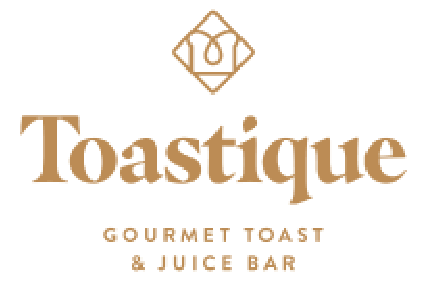FIND A RECESSION-RESISTANT CAREER WITH TOASTIQUE
Common Causes Of Recessions
We’ve all heard about the effects factors like inflation, global conflict, and health crises have on the economy. The term ‘recession’ is getting thrown around a lot, and while it’s a little bit early to tell for sure, it seems that may very well be what we have to deal with in the coming months.
But despite all of the panic and worry that comes with a potential recession, the truth is that they’re only as damaging as you let them be. With the proper insight and planning, you can weather any storm – and even come out on the other side stronger than before.
In this article, we’ll take the fear out of recessions by explaining them in detail and outline how you can use them to your advantage as a Toastique Franchise Owner.
RECESSIONS DEFINED
The word recession refers to a significant and prolonged drop in economic activity and growth. It illustrates situations in which output declines, GDP shrinks rather than grows, and the economy contracts.
Recessions have existed for over two centuries, beginning after the industrial revolution. During this time, countries began to experience large-scale economic downturns that impacted their modernizing economies.
There isn’t a set threshold or definition for what makes a contraction a recession, as it can differ from country to country. However, a general rule among economists is that two consecutive quarters or more of negative growth in GDP qualifies as a recession.
While this is the general definition, there are other ways to measure whether or not an economy is in a recession. For example, some economists look at other indicators such as employment rates, retail sales, and industrial production.
Recessions can last for anything from a few months to several years and can have far-reaching effects on economies all over the world.

Common Causes Of Recessions
Recessions can be sparked by many factors, many of which often cause a negative domino effect on other areas of an economy. Here are some of the most common reasons for recessions and their impacts.
Sudden Economic Shock
Economic shocks are surprise factors or challenges that damage an economys function. When they occur, supply and demand usually shift unpredictably, causing prices to change and economic activity to slow down or even halt.
A few examples of economic shocks are natural disasters, terror attacks, and, as you may already be familiar with, COVID-19. While it’s impossible to predict when these crises might happen, they can have a severe and long-lasting impact on economies, sometimes taking years for them to recover.
Excessive Debt
When people or businesses have too much debt, the costs of servicing it can affect their ability to pay all their bills and commitments. This leads to bankruptcies and defaults, which in turn can cause a decrease in economic activity and an increase in unemployment.
Excessive debt is often considered one of the leading causes of recessions, as it can have a domino effect on businesses and consumers. When people struggle to pay their debts, they often reduce their spending, which impacts firms and leads to job losses.
High Inflation
Inflation refers to the upward increase in the price of goods and services over time. It’s always been a thing and isn’t necessarily problematic unless it gets out of control. When inflation rises excessively to the point where it outpaces wage growth, it can cause serious problems.
A common way governments have sought to control inflation over the years – and today – is through increasing interest rates. However, when done to excess, this can lead to a decrease in demand and an increase in unemployment, both of which can cause a recession.
The Economy’s Current State Of Affairs
After years of global turbulence, lockdowns, and fiscal stimulus, analysts are no longer talking about the potential of a post-pandemic economic boom in 2022 and are instead predicting a recession. Of course, there isn’t a consensus across the board. Still, every day, another financial institution or respected economist is jumping on the bandwagon and agreeing that we are headed for some sort of economic downturn.
How did we get here? Well, there are several reasons for this sudden change in tone:
Supply Chain Disruptions And Inflation
The U.S. began seeing signs of inflation in 2021. This was somewhat expected after years of lockdowns from the COVID-19 pandemic, disrupted supply chains, and increased prices of certain commodities. However, what wasn’t expected was the speed at which these inflationary pressures would appear. The United States Federal Reserve vastly underestimated how aggressively it would need to take action on the problem, and now we are seeing the effects of that miscalculation (a 40-year high).
Of course, this has been compounded by global factors, such as production line disruptions in Asia and recent economic sanctions on Russian oil and gas, which have worsened inflationary pressures.
Interest Rate Hikes
In response to the quickly-rising inflation we’ve seen over the past year, the Federal Reserve has taken some – although delayed – action in controlling the problem. It’s increased rates multiple times in 2022, most recently by bases of 0.75 of a percentage point in both June and July. Economists predict that this is only set to continue; a survey by Bloomberg shows that most industry experts anticipate subsequent increases leading the rate to a range of 3.25% to 3.5% by the end of the calendar year.
Yield Curve Inversion
The yield on 2-year U.S. Treasury notes rose above the yields on 10-year Treasury notes in early July, a condition known as “yield curve inversion.” This is often seen as a predictor of an oncoming recession, as it indicates that investors are becoming more risk-averse and are anticipating lower economic growth in the future. The economy’s current yield curve inversion is at its deepest since 2007, the year before the notorious “Great Recession” of 2008.
Why This Isn’t 2008
Despite all of this talk about recessions and economic contractions, the fact is that today’s situation is much different than that of 2008’s. The 2008 recession was uniquely characterized by a housing market crash, record-high levels of household debt, and widespread defaults on subprime mortgages.
In contrast, today’s economy is in much better shape. The job market is strong, wages are rising, and thanks to stimulus payments, many people have savings. Experts believe that a potential recession in 2022 or 2023 won’t emulate those of the past but will instead be a garden variety occurrence, one that’s under much better circumstances.
Factors Entrepreneurs Need To Consider
As we’ve already mentioned, not everyone experiences recessions similarly. Some people and businesses can weather them quite well, while others suffer greatly. So what determines how well you’ll do during an economic downturn?
Sector
The first factor to consider is what sector your business falls into. Some sectors are naturally more resilient to recessions than others. For example, companies that provide essential goods and services, such as food and healthcare, do pretty well during economic contractions. This is because people still need to eat and take care of their health, regardless of the state of the economy.
Income And Profits
Generally, businesses with higher incomes and profits are better equipped to weather economic downturns. They have more money to invest in their operations, which gives them a greater chance of success. They can also afford to take risks, often necessary for innovation and growth.
Find a Recession-Resistant Career With Toastique
So what does this all mean for entrepreneurs? If you’re considering starting a business, now is an excellent time to research and find a recession-resistant opportunity. Toastique is a great option to consider, as it has the potential to do well in any economic climate for many reasons.
A Track Record Of Resilience
Having been in business for about a year before the pandemic, Toastique’s entry into the grab-and-go food sector was trial by fire. After opening two locations by the end of 2019, founders Brianna and Kyle faced the daunting task of keeping their business afloat during an unprecedented global event and growing it throughout 2020.
While other food businesses were forced to shutter their doors, Toastique could pivot and adapt, thanks to the adoption of third-party delivery options and online ordering.
As a result, the company could expand to three new locations in 2020 and bolster its growth to unimaginable levels. 2021 saw Toastique bring in $847,710* in gross sales and an unheard-of profit margin of 20% compared to an average of six to nine percent for the rest of the industry.
*Item 19, 2022 FDD
A Positive Industry Outlook
Specializing in the $4.2 trillion health and wellness industry, $54.8 billion in superfoods, and $287.1 billion fast-casual industry, Toastique franchise has a lucrative outlook for growth. Its healthy, easy-to-go meals appeal to the future of consumerism, where the prospect of grabbing fast and fresh food is desirable. It’s also been found that healthy living improves during recessions, which further bodes well for Toastique’s future.
An On-Trend Product
One of Toastique’s most famous menu items – upscale avocado toast – is considered a leading dish in restaurant breakfast/brunch items. So much so that 45% of survey respondents agreed it was a significant trend as far back as 2018. Avocado toast’s popularity has only grown since then, and as a result, Toastique has.
An Attractive And Nimble Business Model
While many food businesses have been struggling to find their footing in recent years, Toastique has done nothing else but thrive. It’s been able to quickly adapt and change with the times, thanks to its simple business model.
Toastique ‘s menu is made up of healthy, grab-and-go items that are easy to make and don’t require a lot of ingredients. This allows the company to keep it is overhead expenses low and its menu items affordable.
Moreover, because it specializes in food, Toastique doesn’t have to worry about the volatile trends that often plague other industries, such as fashion and technology. As it did once during the COVID-19 pandemic, the company’s franchise business model can quickly adapt to changing consumer needs and preferences.
Why Starting A Business During A Recession Can Be
Lucrative In The Long Term

While a recession can be scary for businesses, it doesn’t have to end the world. For entrepreneurs, it can be an opportunity to start a recession-resistant company and ultimately be successful.
LESS COMPETITION
During a recession, many businesses close their doors for good. This leaves room for new companies to enter the market and fill the void. If you can provide a product or service in demand, you’ll be in a great position to expand your reach and capitalize on consumer spending once it eventually rises again.
MORE OPPORTUNITIES FOR FUNDING
With businesses failing left and right, more money is available for those who can weather the storm. This is because investors are more likely to put their money into businesses with a higher chance of succeeding during tough economic times. If you can show that your business has what it takes to make it through a recession, you’ll be more likely to get the funding you need to grow.
LOWER OVERHEAD COSTS
Businesses are more than likely to sell products, assets, or equipment at a lower price in a recession. This could be an excellent opportunity to buy what you need for your business at a fraction of the cost.
MORE MOTIVATED EMPLOYEES
In a recession, jobs are scarce. This means that employees are more likely to be grateful for their work and motivated to do their best. If you can provide a stable work environment, you’ll be more likely to attract and retain top talent.
NEGOTIATING POWER
In a recession, businesses are often more willing to negotiate a price. This allows you to get what you need at a lower cost, saving you a lot of money in the long run.
While some risks are associated with starting a business during a recession, there are also many potential rewards. Toastique is the perfect example of a company that’s not only weathered the storm but come out stronger on the other side.
NOW IS THE TIME TO MAKE YOUR ENTREPRENEURIAL DREAMS A REALITY
Not to beat around the bush, but an economic slowdown is coming. And while that’s admittedly not ideal, we want our Franchise Owners to know that we’ve got their back. We’re committed to helping them weather the storm and come out on the other side ready to capitalize when the economy picks up. So whatever challenges lie ahead, we’ll be facing them together.
With less competition and more potential customers looking for healthy and affordable food options, now is the perfect time to get involved with Toastique breaksfast franchise. Not only will you be getting in on the ground floor of a fantastic company, but you’ll also set yourself up for long-term success.
If you’ve been thinking about starting your own business, there’s no time like the present. Contact our franchising team today to learn more about how you can get started with Toastique. We can’t wait to help you make your entrepreneurial dreams a reality!
